Famous Ancient Ceramic Craft Villages In Vietnam (Part 1)
When talking about Vietnamese ceramics, it is impossible not to mention the long-standing traditional pottery villages in the North. This place preserves unique ceramic making secrets passed down through generations, creating sophisticated products that bear the cultural imprint of the nation. Each pottery village has its own story and identity, with characteristic products and unique crafting techniques. Let's find out more details with CHUS in this article!
Northern pottery villages
Bat Trang
Bat Trang pottery village is one of the oldest and most famous traditional craft villages in Vietnam. Located on the banks of the Red River, located in Bat Trang commune, Gia Lam district, about 13km southeast of Hanoi center. Bat Trang pottery village has a history of more than 700 years and is famous for its diverse ceramic products, rich in design and color.

According to records, Bat Trang pottery village was formed during the Ly Dynasty around the 14th - 15th centuries. Thanks to abundant raw materials and convenient land transportation, Bat Trang quickly developed into the largest ceramic production center. Vietnam. Through many historical ups and downs, the traditional Bat Trang pottery village still maintains its identity and has an increasingly strong position.
Bat Trang ceramics is famous for its typical ancient glazes such as ivory glaze, opaque glaze, green glaze, and cracked glaze. Each type of glaze has its own unique beauty, creating diversity and richness for ceramic products here. Bat Trang is famous for making handmade ceramics, from kneading, shaping to burning. It is the meticulousness and ingenuity of the artisans that create sophisticated ceramic products, imbued with traditional cultural imprints.
Chu Đậu
Chu Dau village, also known as My Xa pottery village, is a long-standing traditional craft village, located in Thai Tan and Minh Tan communes, Nam Sach district, Hai Duong province. According to archaeologists, Chu Dau pottery village appeared during the Ly Dynasty and developed strongly during the Tran Dynasty. During this period, the village produced royal ceramics to serve the court and the nobility.

However, after the 17th century, due to the Le-Mac war, Chu Dau pottery village was severely damaged and gradually faded away. It was not until the beginning of the 21st century that the craft village was restored and developed again. Chu Dau pottery is deeply influenced by Buddhism and Confucianism. This is reflected in the patterns and motifs on the ceramics, which all bear the cultural and spiritual imprint of the Vietnamese people.
Chu Dau ceramics are made from fine white clay, fired at high temperatures, so they are durable and have good heat resistance. There are many diverse designs, from simple daily items such as bowls, plates, cups to sophisticated decorations such as flower vases, ceramic statues,... Besides, Chu Dau handmade ceramics also famous for its clear white enamel and sophisticated patterns depicted in many forms such as drawing, embossing or painting.
Phù Lãng
Phu Lang pottery village, also known as Bat Trang 2 pottery village, is located in Phu Lang commune, Que Vo district, Bac Ninh province. Phu Lang pottery village has a history of formation and development along with Bat Trang pottery village, but has its own unique features. This is reflected in the products, pottery techniques and culture of the craft village.
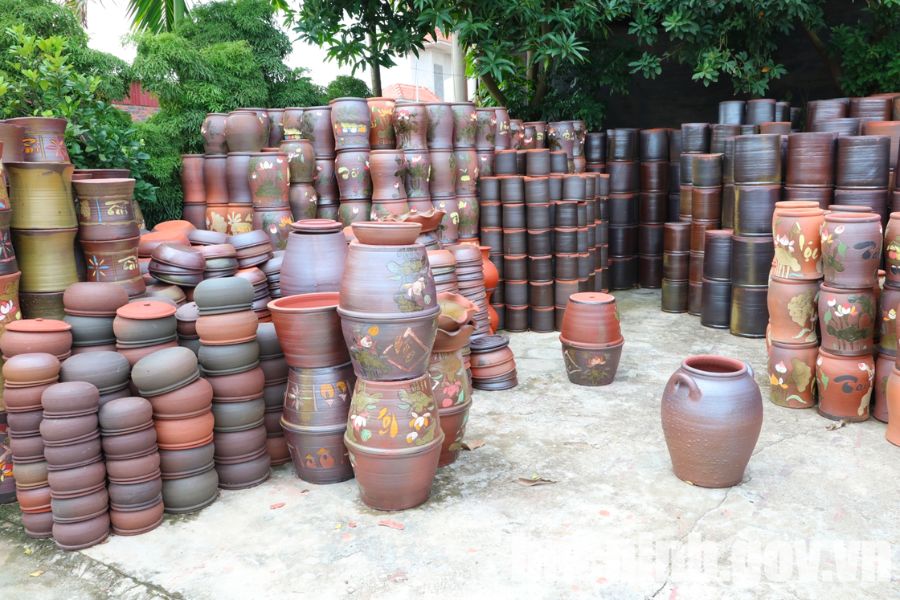
Phu Lang Pottery mainly produces household items from red clay, shaped manually on a turntable. Ceramic products here are highly durable, reasonably priced, and suitable for people's needs in daily life. This place is famous for its brown, dark brown, light yellow, dark yellow ceramic glaze, commonly known as eel skin glaze. This glaze color is created from natural materials and is very different from other ceramic villages in Vietnam.
Thổ Hà
Along with the famous Bat Trang village, Tho Ha pottery village in Bac Giang has unique characteristics, creating a strong attraction for tourists and ceramic lovers. This is one of the oldest traditional ceramic villages in Vietnam, formed and developed since the 12th century.
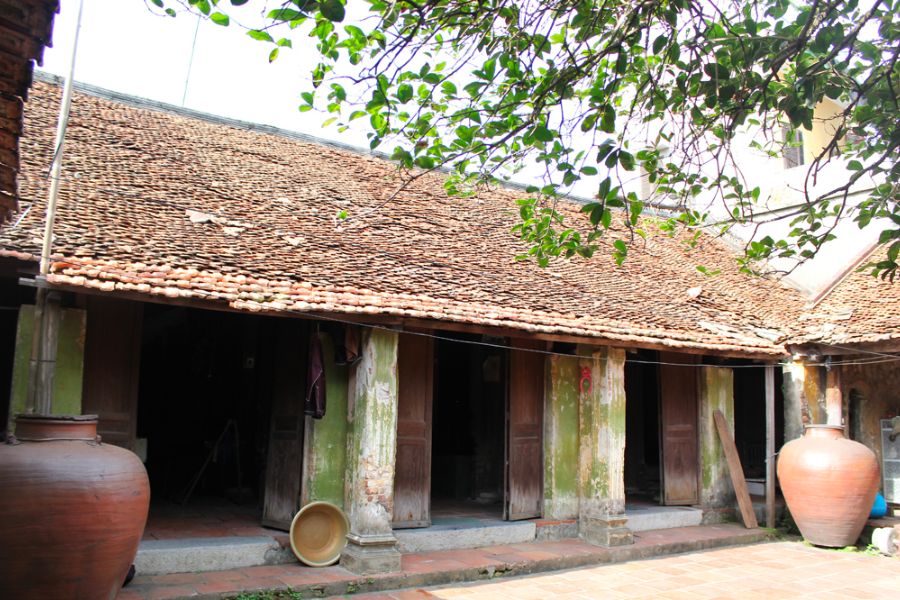
Yellow clay and green clay are precious materials from mother earth, molded by the talented hands of Tho Ha workers, breathing life into each product. Fired at high temperatures, the clay will naturally melt and become porcelain, creating a unique dark brown and charcoal purple color that accentuates the beauty of the entire pottery village.
Tho Ha ceramics is famous for its diverse products from jars and ceramic pots for daily use to sophisticated decorations. Currently, this place has reached far beyond the village boundaries, conquering the market with its outstanding advantages such as high durability, reasonable price and especially its rustic and intimate beauty.
Hương Canh
Huong Canh Pottery Village is located in Huong Canh commune, Binh Xuyen district, Vinh Phuc province, about 50km from Hanoi capital. Famous for its age of more than 300 years, Huong Canh pottery village carries with it the story of a golden age of Vietnamese pottery. This place once made a brilliant mark with its rustic ceramic products, with the characteristic burnt terracotta color, hiding the unique "glaze in the soil" secret.
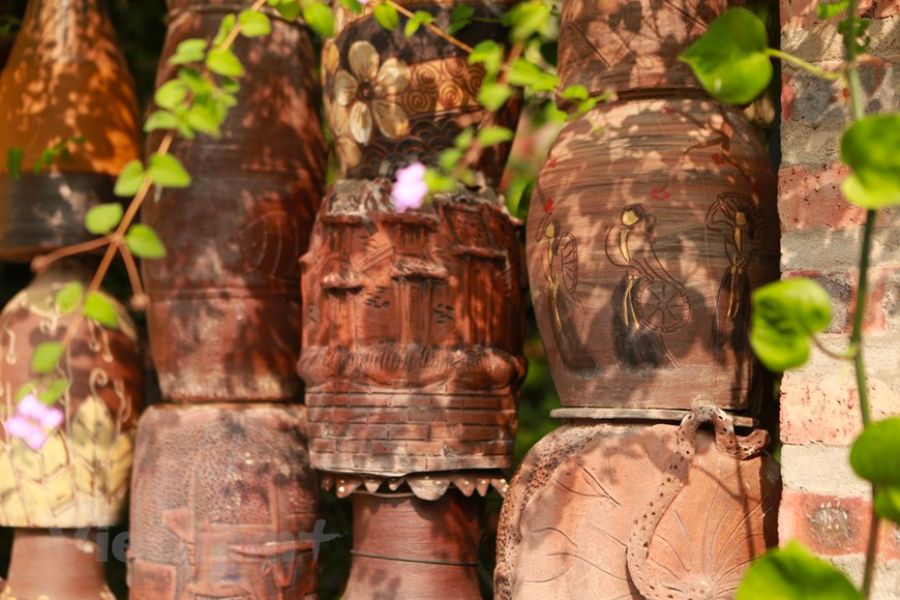
Huong Canh ceramics possess excellent water resistance, effectively block light, and are chosen to help preserve food's full flavor. The main material is locally mined green clay, which is smooth, low in impurities, and easy to thin, helping artisans unleash their creativity. Despite going through a difficult period for the country, Huong Canh pottery still preserves its traditional values, bearing the mark of time.
Gia Thủy
On the land of the ancient capital of Ninh Binh, Gia Thuy pottery village is located in Gia Thuy commune, Nho Quan district, silently preserving the traditional flame for more than 50 years. This place is not only a cultural treasure but also a livelihood for hundreds of people. Through many ups and downs of history, the pottery village still retains precious traditional values, contributing to preserving the national cultural identity.
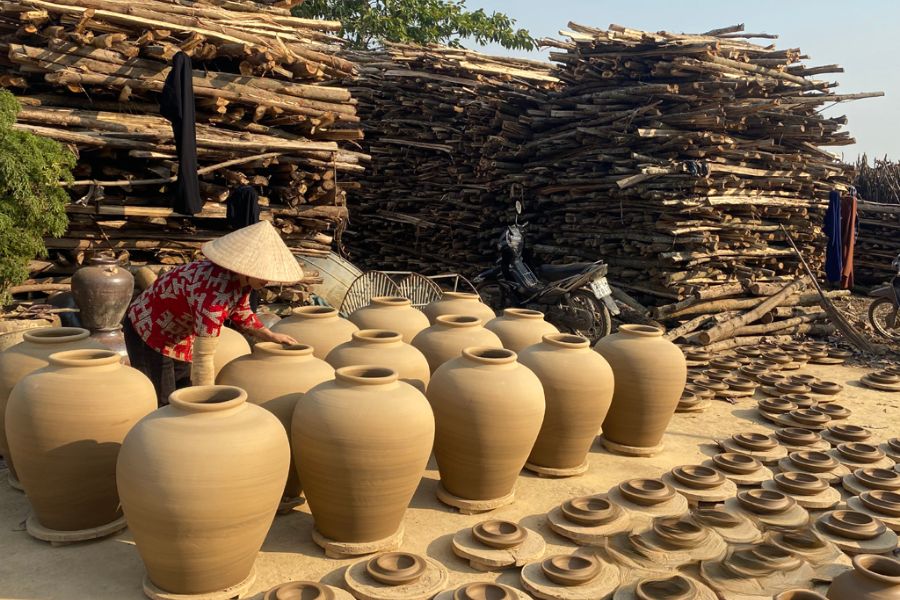
Products of Gia Thuy pottery village are made from locally exploited yellow-brown clay, fired at high temperatures to create durability and characteristic color. Gia Thuy ceramics are famous for products such as jars, jars, pots, pots, vases, vases, teapots,... with sophisticated decorative patterns, bearing the mark of Vietnamese culture. The Gia Thuy ceramic production process goes through many meticulous stages, requiring the craftsman's ingenuity and high artistic spirit to create the quality and value of the product.
Bạch Liên Bồ Bát
The history of Bo Bat pottery village spans thousands of years, evidenced by the dense layers of terracotta and ancient pottery fragments found. According to history books, during the Dinh - Early Le period, talented Bo Bat artisans created high-class ceramics for the king such as citadel bricks, household appliances, dragon head mascots,...
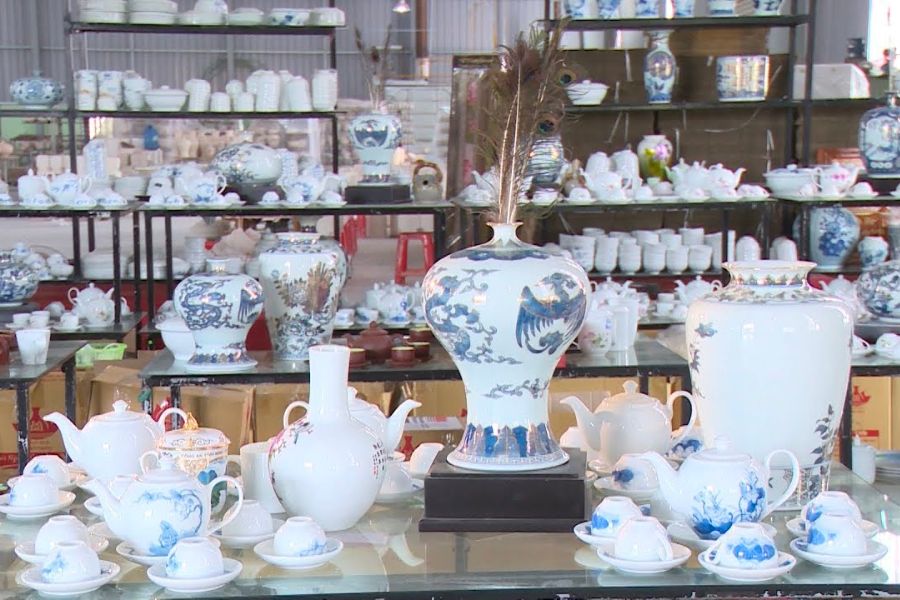
The secret to creating the Bo Bat ceramic brand is the rare Bo Di clay, also known as young clay. Bo Di soil only needs to be baked about 50 - 70% of the time compared to other types of soil while still ensuring smoothness, hardness, and less cracking. After going through the heating process, this type of soil shines with pure white glaze, like moonlight reflecting on a lake surface. This is also a special feature of this type of ceramics that is difficult to find in craft villages. other. Today, with the development of Ninh Binh tourism, Bo Bat pottery is also strongly revived.
Kim Lan
When talking about ancient ceramics in Hanoi, people often remember Bat Trang, but few people know that, hidden on the Bac Hung Hai canal, there is an ancient handmade ceramic village called Kim Lan. Located in Kim Lan commune, Gia Lam district, Hanoi, just a small canal from Bat Trang.
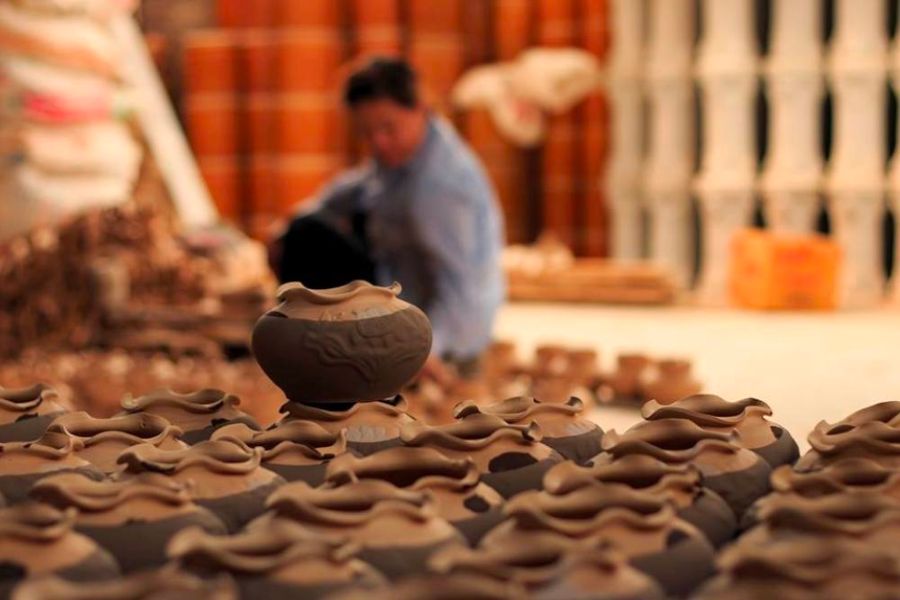
What is special is that, based on the excavated relics, pottery in Kim Lan appeared earlier than in Bat Trang. Amid the noise and bustle of Bat Trang, Kim Lan is like a peaceful "oasis", quietly preserving the quintessence of traditional ceramics. Coming here, visitors can find vases, ceramic jars, ornamental pots, incense burners,... to cups, bowls, toothpick holders,... from popular to high-end. Each product is meticulously handcrafted, bearing the mark of traditional craft village culture.
You may want to take a look at: The Flourishing Periods Of Vietnamese Ceramics
Conclusion
Above are some sharings revolving around the topic of pottery villages in the North. Hopefully you will have more interesting information and a new perspective on the traditional beauty of our country's ceramic culture, as well as the diversity of Vietnamese ceramics. Currently, you can choose to buy high-end, famous ceramics at CHUS to decorate your living space or as gifts!
Read the following article to learn more about ceramic villages in the Central and Southern regions of our country.







